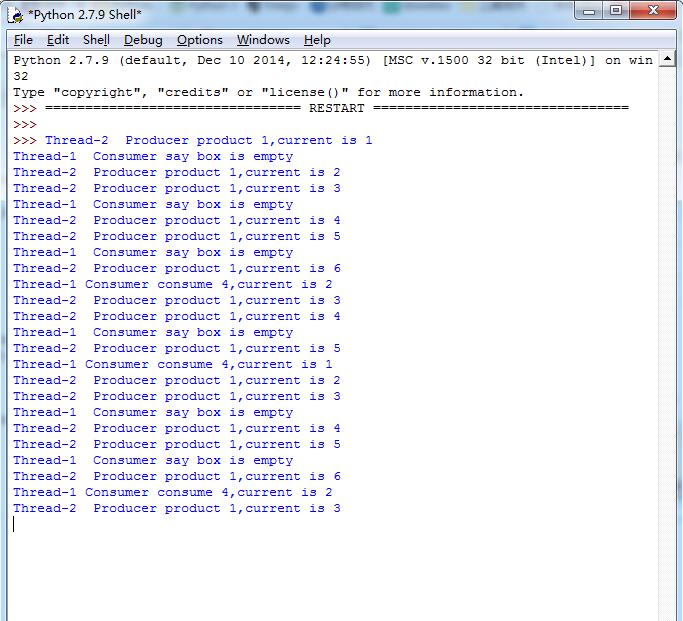最新下载
热门教程
- 1
- 2
- 3
- 4
- 5
- 6
- 7
- 8
- 9
- 10
python条件变量之生产者与消费者操作实例分析
时间:2017-07-17 编辑:简简单单 来源:一聚教程网
互斥锁是最简单的线程同步机制,面对复杂线程同步问题,Python还提供了Condition对象。Condition被称为条件变量,除了提供与Lock类似的acquire和release方法外,还提供了wait和notify方法。线程首先acquire一个条件变量,然后判断一些条件。如果条件不满足则wait;如果条件满足,进行一些处理改变条件后,通过notify方法通知其他线程,其他处于wait状态的线程接到通知后会重新判断条件。不断的重复这一过程,从而解决复杂的同步问题。
可以认为Condition对象维护了一个锁(Lock/RLock)和一个waiting池。线程通过acquire获得Condition对象,当调用wait方法时,线程会释放Condition内部的锁并进入blocked状态,(但实际上不会block当前线程)同时在waiting池中记录这个线程。当调用notify方法时,Condition对象会从waiting池中挑选一个线程,通知其调用acquire方法尝试取到锁。
Condition对象的构造函数可以接受一个Lock/RLock对象作为参数,如果没有指定,则Condition对象会在内部自行创建一个RLock。
线程同步经典问题----生产者与消费者问题可以使用条件变量轻松解决。
| 代码如下 | 复制代码 |
importthreading importtime classProducer(threading.Thread): def__init__(self): threading.Thread.__init__(self) defrun(self): globalcount whileTrue: con.acquire() ifcount <20: count+=1 printself.name," Producer product 1,current is %d"%(count) con.notify() else: printself.name,"Producer say box is full" con.wait() con.release() time.sleep(1) classConsumer(threading.Thread): def__init__(self): threading.Thread.__init__(self) defrun(self): globalcount whileTrue: con.acquire() ifcount>4: count-=4 printself.name,"Consumer consume 4,current is %d"%(count) con.notify() else: con.wait() printself.name," Consumer say box is empty" con.release() time.sleep(1) count=0 con=threading.Condition() deftest(): foriinrange(1): a=Consumer() a.start() foriinrange(1): b=Producer() b.start() if__name__=='__main__': test() | |
上面的代码假定消费者消费的比较快,输出结果为:
相关文章
- C语言中全局变量和局部变量详解及实例介绍 01-13
- PHP导出数据超时的优化建议解读 10-31
- PHP之mysql位运算解析 10-31
- Laravel实现登录跳转功能解析 10-31
- php双向队列解读 10-31
- Laravel异常上下文解决教程 10-24















